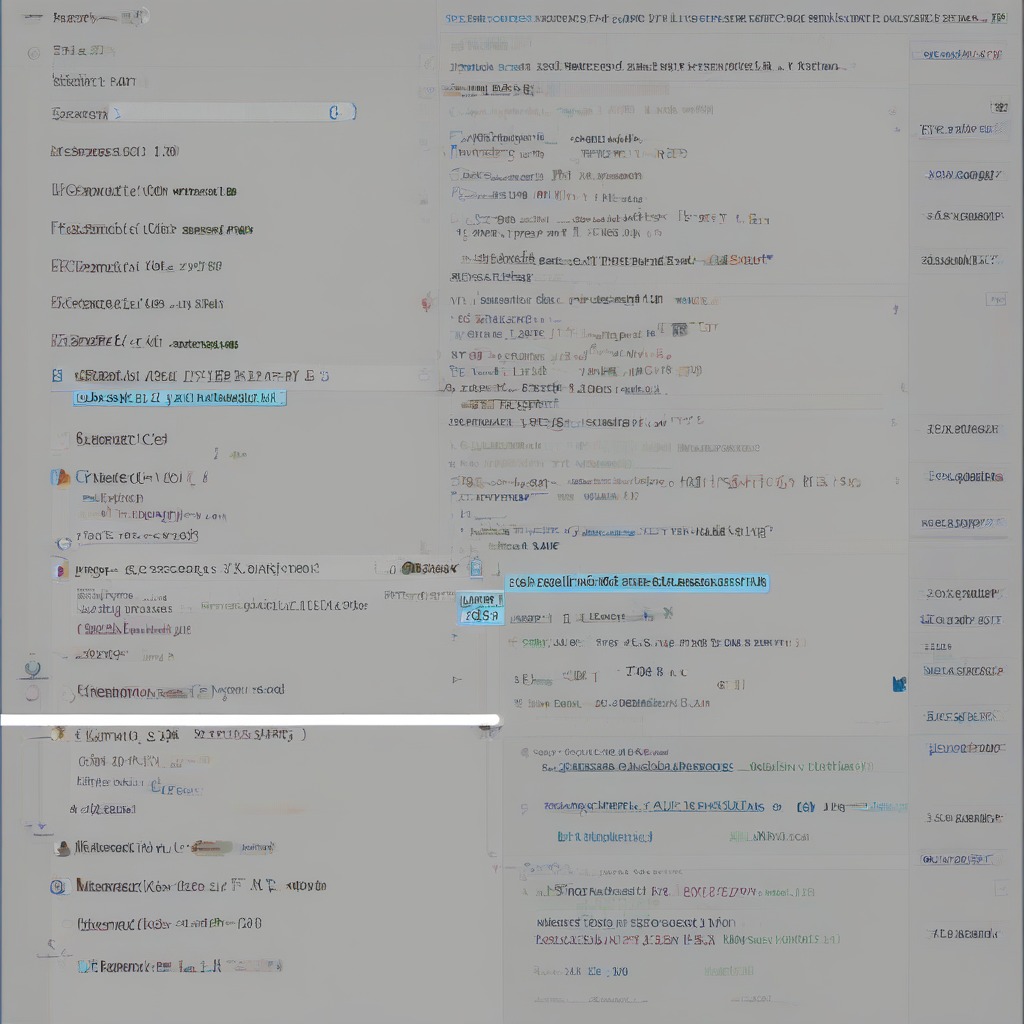Boosting Customer Satisfaction: A Comprehensive Guide to Elevating Customer Experience
In today’s fiercely competitive market, customer experience (CX) has become the ultimate differentiator. It’s no longer enough to simply offer a good product or service; businesses must go above and beyond to create memorable and delightful interactions that foster customer loyalty and advocacy. This comprehensive guide delves into the multifaceted world of customer experience, exploring proven strategies and innovative approaches to elevate customer satisfaction and drive business success.
1. Understanding the Customer Journey
The foundation of exceptional CX lies in comprehending the customer journey. This encompasses every touchpoint a customer has with your brand, from initial awareness to post-purchase engagement. By mapping the journey, you can identify potential pain points and opportunities for improvement.
- Awareness: How do customers discover your brand? Is your online presence compelling and easy to navigate? Do your marketing efforts resonate with your target audience?
- Consideration: What factors influence a customer’s decision to choose your product or service? Is your website informative and persuasive? Do you offer competitive pricing and transparent information?
- Purchase: Is the purchasing process seamless and convenient? Do you offer multiple payment options and secure checkout? Are customers informed about shipping and delivery timelines?
- Post-Purchase: How do you engage customers after they’ve made a purchase? Do you provide timely order updates and tracking information? Do you offer customer support channels that are easily accessible and responsive?
- Loyalty: How do you nurture customer relationships and encourage repeat purchases? Do you offer loyalty programs, personalized recommendations, and exclusive benefits? Do you actively solicit feedback and address customer concerns?
2. Embracing Empathy and Personalization
Customers crave personalized experiences that cater to their individual needs and preferences. Embracing empathy means understanding their motivations, challenges, and expectations. By leveraging data analytics and customer insights, businesses can create tailored interactions that foster stronger connections.
- Data-Driven Insights: Gather data about customer demographics, purchase history, browsing behavior, and feedback. Utilize these insights to personalize marketing campaigns, product recommendations, and communication channels.
- Personalized Communication: Address customers by name, segment your email lists, and tailor your message to their interests. Use AI-powered chatbots to provide personalized support and recommendations.
- Customer Journey Mapping: By meticulously mapping the customer journey, you can identify touchpoints where personalization can enhance the experience. For instance, offer tailored product recommendations during checkout or send personalized email follow-ups based on past purchases.
3. Prioritizing Customer Support
Exceptional customer support is the cornerstone of a positive CX. It’s not just about resolving issues but about providing prompt, helpful, and empathetic assistance. Customers want to feel valued and understood, even when they encounter challenges.
- Multiple Channels: Offer a variety of support channels, including phone, email, live chat, social media, and self-service options. Ensure that customers can easily access the support they need, regardless of their preferred method.
- Response Time: Strive to respond to inquiries promptly, whether through email, live chat, or social media. Set clear expectations for response times and adhere to them consistently. A delayed response can leave customers feeling frustrated and neglected.
- Empowering Agents: Equip your customer support agents with the knowledge, resources, and tools they need to effectively resolve customer issues. Provide them with access to a comprehensive knowledge base, training materials, and escalation processes.
- Proactive Support: Go beyond reactive problem-solving. Anticipate potential issues and proactively offer assistance. For instance, send automated emails to customers who have abandoned their shopping carts or follow up after they’ve made a purchase to ensure satisfaction.
4. Leveraging Technology for Seamless Experiences
Technology plays a crucial role in shaping modern CX. Businesses must embrace innovative solutions that streamline processes, personalize interactions, and enhance customer convenience. Here’s how technology can be leveraged to create exceptional experiences.
- Mobile Optimization: Ensure your website and mobile apps are optimized for a seamless experience across all devices. Customers expect fast loading times, intuitive navigation, and responsive design. Mobile-first design ensures that your brand is accessible and user-friendly on the go.
- AI-Powered Chatbots: Chatbots can provide instant support, answer frequently asked questions, and guide customers through various tasks. AI-powered chatbots can also be used to gather valuable customer insights and personalize interactions. They can learn from past conversations and offer more tailored responses over time.
- Virtual Assistants: Virtual assistants like Siri, Alexa, and Google Assistant are becoming increasingly popular. Integrating these technologies can create seamless experiences for customers, allowing them to interact with your brand through voice commands. For instance, customers can use voice commands to place orders, track shipments, or access customer support.
- Augmented Reality (AR) and Virtual Reality (VR): These immersive technologies offer exciting opportunities to enhance customer engagement and create unforgettable experiences. AR and VR can be used to provide virtual product demos, interactive shopping experiences, and immersive brand storytelling. For example, furniture retailers can use AR to allow customers to visualize how different pieces would look in their homes.
5. Cultivating a Culture of Customer-Centricity
True customer-centricity goes beyond simply implementing CX strategies; it requires a fundamental shift in organizational culture. Every employee, from the CEO to the frontline staff, must be committed to delivering exceptional experiences.
- Leadership Buy-In: Leaders must champion customer-centricity and set the tone for a customer-focused organization. They should be actively involved in customer feedback initiatives and prioritize investing in CX initiatives.
- Employee Empowerment: Empower employees to make decisions that enhance the customer experience. Provide them with the autonomy and resources they need to go the extra mile for customers. Encourage employees to share their ideas and suggestions for improving CX.
- Continuous Feedback: Establish a feedback loop to gather customer insights and solicit employee feedback. Use these insights to make data-driven improvements to your CX strategies and address any emerging challenges.
- Training and Development: Invest in employee training and development programs that focus on customer service skills, product knowledge, and CX best practices. Employees should be equipped to handle customer inquiries, resolve issues, and provide exceptional support.
6. Measuring and Optimizing Customer Experience
Measuring the effectiveness of your CX initiatives is crucial for continuous improvement. Track key metrics, analyze feedback, and identify areas for optimization. By consistently monitoring and iterating, you can ensure that your CX strategies are delivering the desired results.
- Customer Satisfaction (CSAT) Scores: Conduct surveys or use automated feedback mechanisms to gather customer satisfaction ratings. Analyze these scores to identify areas where customers are satisfied and areas that require improvement.
- Net Promoter Score (NPS): This metric measures customer loyalty and willingness to recommend your brand. It can be used to identify promoters, passives, and detractors and segment your customer base for targeted outreach.
- Customer Effort Score (CES): CES measures the effort customers need to exert to interact with your brand. A low CES score indicates that customers find it easy to do business with you. A high CES score suggests that customers encounter obstacles and friction points.
- Customer Retention Rate: Track the percentage of customers who continue to do business with your brand over time. A high retention rate indicates that customers are satisfied with their experience and are likely to become repeat buyers.
- Customer Lifetime Value (CLTV): CLTV measures the total revenue generated from a customer over their relationship with your brand. By focusing on increasing CLTV, you can maximize customer value and loyalty.
7. Building a Community Around Your Brand
Creating a sense of community around your brand can foster loyalty and advocacy. Customers are more likely to engage with brands that they feel connected to and that provide a platform for shared experiences.
- Social Media Engagement: Actively engage with customers on social media platforms. Respond to comments, answer questions, and share valuable content. Create social media groups or forums where customers can connect with each other and discuss their experiences with your brand.
- Loyalty Programs: Offer loyalty programs that reward customers for their repeat business. Tiered loyalty programs can offer exclusive benefits and personalized rewards based on customer spend and engagement.
- Events and Workshops: Host events or workshops that provide value to your customers. This could include product demonstrations, educational sessions, or networking opportunities. These events can help build a sense of community and provide customers with a deeper understanding of your brand.
- Online Forums and Communities: Create online forums or communities where customers can connect with each other and share their experiences. These spaces can foster a sense of belonging and provide a platform for customer feedback and support.
8. Responding to Customer Feedback
Customer feedback is a valuable asset. It provides insights into customer perceptions, preferences, and pain points. Businesses must actively solicit feedback, analyze it objectively, and take action to address customer concerns.
- Multiple Feedback Channels: Offer multiple channels for customers to provide feedback, such as online surveys, comment forms, social media platforms, and dedicated customer support lines.
- Regular Feedback Collection: Establish a regular cadence for collecting customer feedback. This could be through periodic surveys, post-purchase feedback forms, or automated feedback mechanisms.
- Actionable Insights: Analyze feedback data to identify patterns and trends. Focus on addressing areas that are consistently mentioned by customers and prioritize those that have the greatest impact on CX.
- Transparency and Accountability: Be transparent with customers about how their feedback is being used. Communicate any changes or improvements made based on customer feedback. Hold employees accountable for addressing customer concerns and resolving issues promptly.
9. Embracing Continuous Improvement
The journey to exceptional CX is never truly complete. Businesses must be committed to continuous improvement, constantly seeking new ways to enhance customer experiences. This involves staying informed about emerging trends, adapting to evolving customer expectations, and proactively seeking out opportunities for optimization.
- Industry Benchmarks: Stay informed about industry best practices and benchmark your CX performance against competitors. This will help you identify areas where you can improve and stay ahead of the curve.
- Customer Journey Mapping: Regularly review and update your customer journey maps to ensure they accurately reflect customer behavior and expectations. Identify any emerging pain points or opportunities for personalization.
- Data-Driven Optimization: Utilize data analytics to track CX metrics, identify patterns, and guide improvement initiatives. This data-driven approach ensures that improvements are based on real customer insights, rather than assumptions.
- A/B Testing: Conduct A/B testing to experiment with different CX elements, such as website designs, email campaigns, or customer support interactions. This helps you identify the most effective approaches and optimize your CX strategies.
10. Building a Culture of Innovation
To stay ahead of the curve, businesses must cultivate a culture of innovation. Encourage employees to think outside the box, experiment with new ideas, and explore emerging technologies. This innovative mindset can lead to breakthroughs in CX that set your brand apart from the competition.
- Idea Generation: Create a culture where employees feel empowered to share their ideas. Implement suggestion boxes, host brainstorming sessions, and encourage open communication about CX improvement opportunities.
- Prototyping and Experimentation: Foster a culture of experimentation where new ideas are quickly prototyped and tested. This allows you to identify promising solutions and iterate based on customer feedback.
- Embracing New Technologies: Stay abreast of emerging technologies and explore how they can be leveraged to enhance customer experiences. Invest in research and development to explore innovative solutions that deliver value to customers.
- Customer-Centric Innovation: Focus on creating solutions that address real customer needs and solve pain points. Don’t simply implement new technologies for the sake of it; ensure that they are truly adding value to the customer experience.





